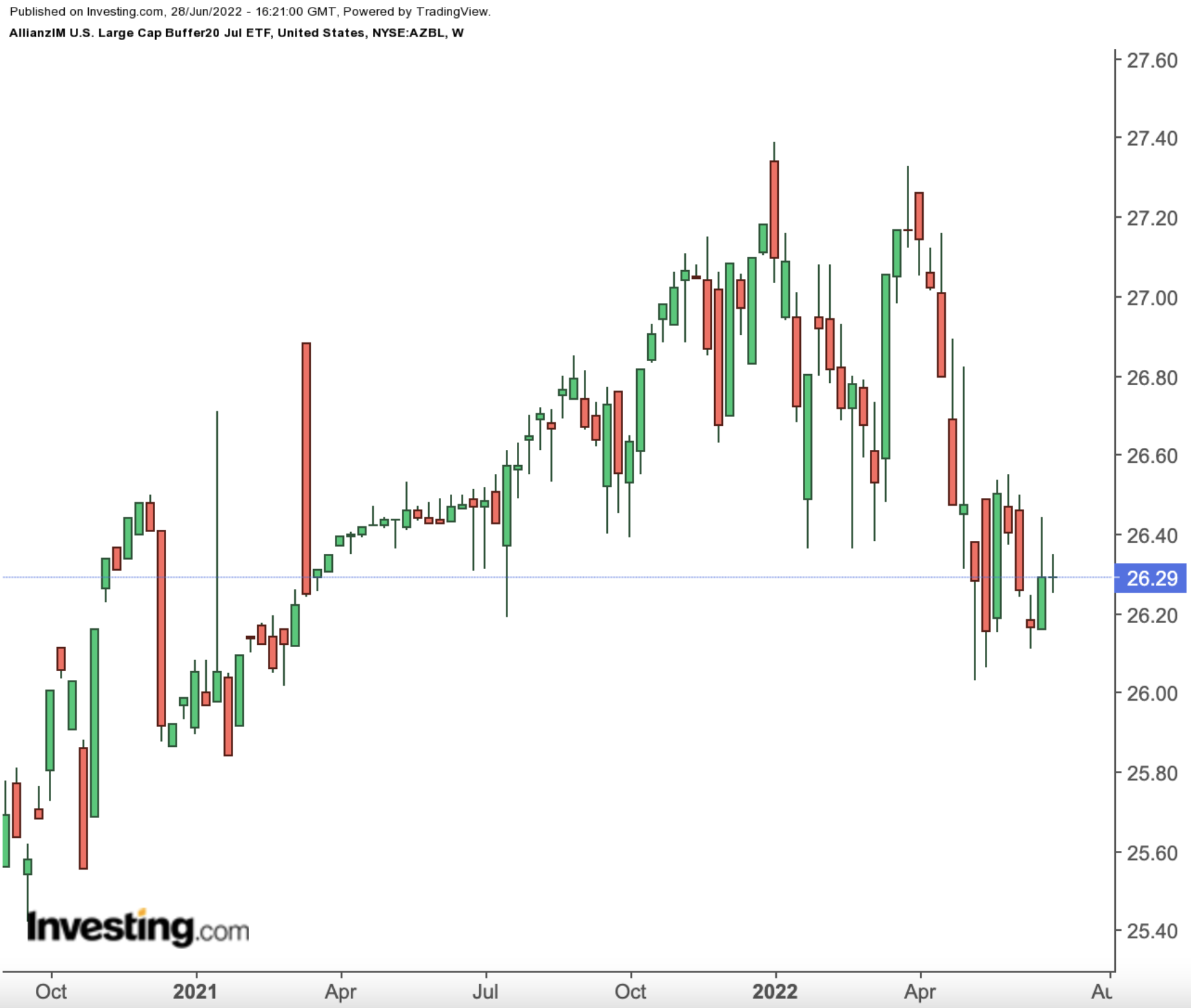Options-based exchange-traded funds (ETFs) have gained popularity among retail investors looking for shelter amidst the current volatility on Wall Street. ETFs incorporating option strategies are increasingly used as defensive plays to help shield against downside risks.
Recent metrics suggest there are now around 3,000 ETFs stateside, of which nearly 500 have hit the market within the past 12 months. Meanwhile, in 2021, assets under management (AUM) in options-based ETFs grew roughly by $20 billion, up 200% year-over-year (YOY).
Options-based ETFs typically employ put options for hedging or covered calls for income generation. There are also several funds with more complex strategies.
The ETF wrapper makes it relatively easy for retail investors to participate in the hedging or income potential these funds offer. However, there are no free lunches on Wall Street. Therefore, readers need to study the risk-reward dynamics of such options-based funds and their suitability for portfolio objectives.
With that information, here are two options-based ETFs that deserve your attention.
1. JPMorgan (NYSE:JPM) Equity Premium Income ETF
- Current Price: $55.81
- 52-Week Range: $52.54 - $63.67
- Yield: 11.03%
- Expense Ratio: 0.35%
Our first fund, the JPMorgan Equity Premium Income ETF (NYSE:JEPI), typically buys large-capitalization (cap) US shares with dividends and sells covered calls to generate regular monthly income. The fund also aims for capital growth as well as low volatility.

JEPI currently has 114 holdings, while no single share comprises more than 1.8% of the portfolio. It started trading in May 2020, and its net assets are over $10 billion.
Health care companies lead the fund with 12.8%. Then come consumer staples (11.9%), industrials (11.5%), information technology (10.9%), financials (10.7%), and utilities (8.1%).
Among the leading names on the roster are the insurance company Progressive Corp (NYSE:PGR); pharma groups Bristol-Myers Squibb (NYSE:BMY) and AbbVie (NYSE:ABBV); confectionery company Hershey (NYSE:HSY); diversified health care giant UnitedHealth (NYSE:UNH); as well as Coca-Cola (NYSE:KO) and PepsiCo (NASDAQ:PEP).
JEPI has lost about 7.2% over the past year and 11.4% since January. By comparison, the S&P 500 index lost around 18.5% in the first half of the year.
We like the high-quality names in the diversified portfolio. Meanwhile, the covered call strategy should continue to generate monthly income whatever the broader market does. Thus, JEPI deserves further attention.
However, readers should remember that in bull markets, covered calls cap returns on a stock (or an ETF). Therefore, the strategy may not be fully appropriate for those contrarian investors who expect a bull market in the summer.
2. AllianzIM U.S. Large Cap Buffer20 Jul ETF
- Current Price: $26.29
- 52-Week Range: $26.03 - $27.39
- Expense Ratio: 0.74% per year
Next up on our list is the AllianzIM U.S. Large Cap Buffer20 Jul ETF (NYSE:AZBL) which offers a defined outcome or buffer. Such funds typically follow a broader index, such as the S&P 500. They also have an outcome period of a full year, offering a built-in percentage loss (downside) buffer level while providing an upside cap for positive returns.
For AZBL, the current outcome period will end on June 30. Then, the upcoming outcome period will run from July 1, 2022, to June 30, 2023. So the fund is balanced annually.
This actively managed ETF uses Flexible Exchange® Options, or FLEX® Options, on the S&P 500 index. It aims to match the returns of the S&P 500 Price Return Index up to a stated upside cap, which is 5.46% gross (or 4.72% net when the 0.74% management fee is discounted). Put another way, if the fund is held for the whole outcome period of one year, the fund could return a maximum of 4.72%.
Meanwhile, AZBL offers a downside buffer against the first 20% of the index losses for the outcome period. But investors who buy the fund after the outcome period has started on July 1 or those who sell before the end of June 30, 2023, will likely see quite different results.

Given today's rising inflation and increasing interest rates that continue to bring volatility to Wall Street, interested readers may find a middle ground in buffered outcome ETFs. They essentially allow investors to participate in some of the growth potential of equities with an explicit downside buffer.
